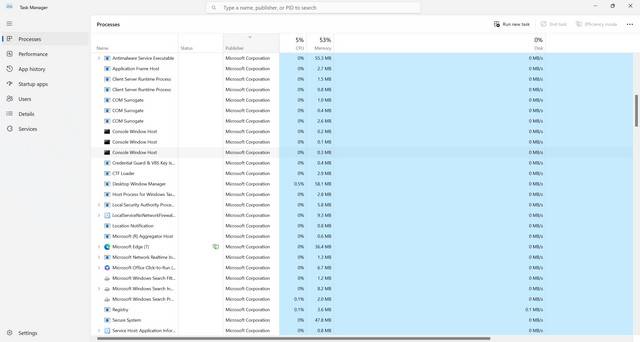When you open the Task Manager on your Windows computer, you may notice a process called “System Idle Process” running in the background. This process often confuses users as it appears to be consuming a significant amount of CPU resources, leading them to wonder why it is running and if it is a cause for concern.

Understanding the System Idle Process
The System Idle Process is a fundamental component of the Windows operating system. Contrary to its name, it is not an active process that performs any specific tasks. Instead, it represents the percentage of idle time the CPU has during a given period. In simpler terms, it indicates how much of the CPU’s processing power is currently not being utilized.
When your computer is idle, meaning you are not actively running any resource-intensive applications or tasks, the System Idle Process will show a high CPU usage percentage. This is because the CPU is not actively engaged in executing any specific instructions, and therefore, it appears as if the System Idle Process is consuming resources.
Why Does the System Idle Process Show High CPU Usage?
As mentioned earlier, the System Idle Process represents the CPU’s idle time. Therefore, when your computer is not performing any demanding tasks, the CPU will have a high idle time, resulting in a high CPU usage percentage for the System Idle Process.
It is important to note that the System Idle Process does not impact the performance or speed of your computer. In fact, it is a sign that your CPU has plenty of resources available to handle any tasks you may initiate. The higher the CPU usage percentage of the System Idle Process, the more processing power is available for other applications and processes.
Differentiating System Idle Process from Malware
While the System Idle Process is a normal and essential part of the Windows operating system, it is crucial to ensure that it is not being used as a disguise for malware or other malicious processes. Malware developers often use deceptive names to hide their malicious activities.
If you notice unusually high CPU usage or suspicious behavior from the System Idle Process, it is recommended to scan your computer for viruses and malware. One reliable tool for this purpose is Malwarebytes Free. It is a reputable antivirus software that can detect and remove various types of malware.
Optimizing System Performance
Although the System Idle Process itself does not require any optimization or intervention, there are other steps you can take to improve your computer’s overall performance:
- Regularly update your operating system and installed software to ensure you have the latest security patches and bug fixes.
- Remove unnecessary startup programs that may be consuming system resources.
- Perform regular disk cleanup and defragmentation to optimize storage space and improve file access speed.
- Upgrade your hardware components, such as adding more RAM or replacing an old hard drive with a solid-state drive (SSD).
Conclusion
The System Idle Process is a normal and essential part of the Windows operating system. It represents the CPU’s idle time and does not impact the performance of your computer. When your computer is idle, the System Idle Process will show a high CPU usage percentage, indicating that your CPU has plenty of resources available for other tasks.
However, it is important to remain vigilant and ensure that the System Idle Process is not being used as a disguise for malware. If you notice suspicious behavior or unusually high CPU usage, it is recommended to scan your computer for viruses and malware using a reliable antivirus software like Malwarebytes Free.
By understanding the purpose and function of the System Idle Process, you can confidently navigate the Task Manager and optimize your computer’s performance for a smoother computing experience.










